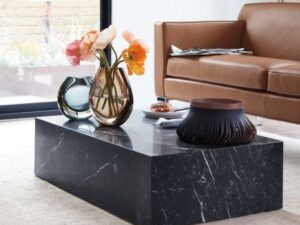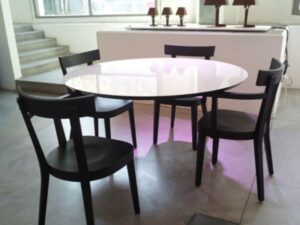Tables have been an integral part of human civilization for centuries, serving as platforms for various activities. Traditionally, tables have been designed with legs, providing stability and support. However, in recent times, designers and inventors have pushed the boundaries of table design, introducing innovative concepts that challenge the conventional notion of tables with legs. In this article, we will walk through what table does not have legs.
History Of Tables And Their Traditional Design
Tables have a rich history, dating back to ancient civilizations such as the Egyptians and Greeks. Throughout history, tables have predominantly been constructed with legs, offering a sturdy base for everyday use. The four-legged table design became a standard, providing stability and balance.
Examining Unconventional Table Designs
In recent years, designers have explored alternative concepts to redefine the traditional table design. These unconventional tables defy the norm and captivate our imagination, bringing a touch of uniqueness and innovation to our living spaces.

Floating Tables: The Illusion of Legless Support
Floating tables create an illusion of levitation by utilizing creative design techniques such as hidden supports or transparent materials. By cleverly concealing the support mechanisms, these tables give the impression of defying gravity, adding an element of intrigue and awe to any room.
Suspended Tables: Harnessing The Power Of Suspension
Suspended tables take advantage of suspension systems to hang from the ceiling or be anchored to the walls. These tables not only maximize floor space but also create a visually stunning centrepiece. The use of sturdy cables or chains allows for practical functionality while showcasing an artistic flair.
Wall-Mounted Tables: Utilizing Vertical Space
Wall-mounted tables offer a space-saving solution, particularly in compact living environments. These tables are affixed to the wall, leaving the floor area clear and providing versatility in usage. Whether used as a dining table, workspace, or decorative piece, wall-mounted tables blend functionality with modern aesthetics.

Optical Illusion Tables: Tricks of the eye
Optical illusion tables employ clever design techniques to create captivating visual effects. By playing with perspective, angles, and materials, these tables challenge our perception, making them a unique focal point in any room. The optical illusion adds an element of surprise and delight, sparking conversations and intrigue.
Magnetic Levitation Tables: The Power Of Magnets
Magnetic levitation tables utilize the power of magnets to suspend the tabletop above a magnetic base. This innovative design not only provides an ethereal appearance but also allows for rotation and movement of the tabletop. The magnetic forces at play create a mesmerizing spectacle that defies traditional table expectations.
Acrylic And Glass Tables: Transparent Wonders
Acrylic and glass tables embrace transparency, offering a modern and elegant aesthetic. These tables give the illusion of being legless, with the tabletop seemingly floating in the air. The use of clear materials enhances the visual appeal, making these tables perfect for contemporary interiors.

Minimalist Tables: Embracing Simplicity
Minimalist tables follow the mantra of “less is more,” emphasizing clean lines, simplicity, and functionality. These tables often feature sleek designs and slim profiles, reducing clutter and creating a sense of openness. By stripping away unnecessary elements, minimalist tables make a bold statement through their understated elegance.
Futuristic Designs: Incorporating Technology
Futuristic tables combine innovative technology with avant-garde design principles. These tables may incorporate features such as built-in charging stations, wireless connectivity, or interactive surfaces. Blending form and function, futuristic tables provide a glimpse into the possibilities of the digital age.
Organic-Inspired Tables: Nature’s Influence on The Design
Organic-inspired tables draw inspiration from nature, reflecting organic shapes, textures, and materials. These tables celebrate the beauty of natural forms, such as tree branches, rocks, or waves. By incorporating elements from the natural world, these tables bring a sense of harmony and tranquillity to living spaces.

Multifunctional Tables: Versatility In A Compact Form
Multifunctional tables are designed to maximize utility in limited spaces. These tables often feature adjustable or foldable components, allowing them to transform into different configurations. Whether serving as a coffee table, dining table, or desk, multifunctional tables adapt to various needs, offering practicality without compromising style.
Unique Materials For Table Construction
Innovative table designs often utilize unconventional materials to create visually striking pieces. From reclaimed wood and metal to concrete, resin, or even recycled materials, these tables showcase the possibilities of unconventional materials in furniture design. The choice of materials adds character, texture, and sustainability to the overall aesthetic.
Conclusion (What Table Does Not Have Legs)
As the world of design continues to evolve, tables without legs challenge our preconceived notions and push the boundaries of creativity. From floating illusions to suspended marvels, and wall-mounted wonders to futuristic innovations, these unconventional tables redefine the concept of functionality and aesthetics. The evolving world of table design invites us to explore new possibilities and reimagine the spaces we inhabit.
FAQs (What Table Does Not Have Legs)
1. Are legless tables stable?
Legless tables, despite their lack of visible support, can be surprisingly stable. Designers employ various techniques such as hidden brackets, counterweights, or advanced engineering to ensure stability and balance. However, it is essential to consider the quality of construction and materials used when selecting a legless table to ensure long-term stability.
2. What are the advantages of wall-mounted tables?
Wall-mounted tables offer several advantages. Firstly, they free up valuable floor space, making them ideal for small apartments or rooms with limited square footage. Secondly, these tables provide a sleek and minimalist look, creating an uncluttered aesthetic. Lastly, wall-mounted tables can be installed at customized heights, catering to individual preferences and needs.
3. How do floating tables stay in place?
Floating tables employ clever design techniques to create the illusion of being legless. While the exact mechanisms can vary, they often utilize hidden supports or transparent materials that blend seamlessly with the tabletop. These supports are strategically placed to distribute the weight evenly, providing stability while maintaining the illusion of levitation.
4. Are magnetic levitation tables practical for everyday use?
Magnetic levitation tables, although fascinating, are still in the realm of conceptual design and are not widely available for everyday use. While they showcase the potential of magnetic forces, their practicality is limited by the complexities of maintaining stability and usability in real-world applications. However, ongoing research and advancements may pave the way for more practical implementations in the future.
5. Can optical illusion tables be customized?
Optical illusion tables offer immense creative possibilities, and many designers provide customization options. These tables can be tailored to specific sizes, shapes, and materials to align with individual preferences and interior aesthetics. Customization allows individuals to have a unique piece that blends seamlessly with their existing decor while still captivating with its optical illusion.
6. What materials are commonly used for minimalist tables?
Minimalist tables often favour materials that embody simplicity and clean lines. Common choices include natural wood, metals like stainless steel or aluminum, and composite materials like fiberglass. The focus is on sleek finishes, smooth surfaces, and minimal ornamentation, creating an understated yet sophisticated look.


1 thought on “What Table Does Not Have Legs? Let’s Best Explore”